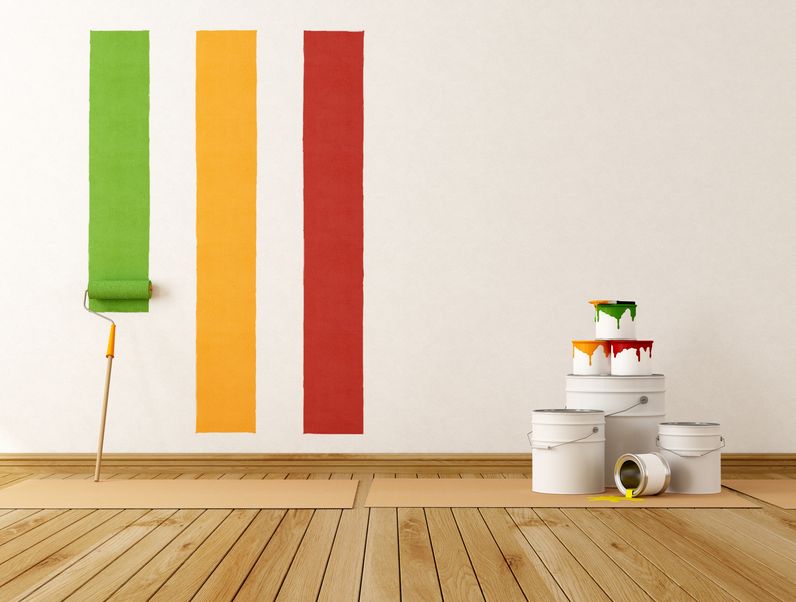The color you decide to paint your walls can make or break your space. That’s a lot of pressure to begin with, and when you get to the store and see hundreds of different shades to choose from, it can become an even more intimidating task. Paint a room the wrong color and you will completely mess up the look and feel you’re going for. But if you choose the right paint color, you’ll enhance the whole of your space and every piece in it.
As you start swatch shopping, use the tips below to help you land on the perfect wall shade!
Don’t choose paint color first.
People often make the mistake of selecting their paint color first, since it’s one of the biggest steps to finishing a room. For the best results though, choosing paint should be your last step.
The furniture, fabrics, and major décor and accent pieces should be chosen for a room first. Then, pull inspiration for your wall color from those elements. There will be more paint colors for you to choose from than furniture and décor colors.
Use the color wheel.
Although color is seen as an element of art, there is a science to it. Learning the basics behind this color theory will help you choose the right one for your home interior.
The easiest way to use color theory when creating an interior color scheme is to consult the color wheel to see how different colors work and don’t work together. For example, if you’re looking for a bolder scheme, choose colors that are opposite on the wheel. For something more subtle, use adjacent colors to create an analogous palette.
Consider the function of the room.
Paint color is perhaps the most powerful design element when it comes to setting the mood in your space. The mood you’ll want to create in a room will depend on the purpose of that room.
In a home office, for example, you’ll probably want a color that makes you feel productive and energized, such as green or turquoise. But in the bedroom, it’s better to have a hue that helps you relax and feel calm, such as a shade of gray or dark blue. So, as you’re choosing your paint color, think about the emotions you need your space to elicit.
Don’t forget about undertones.
When a color is created by mixing two different colors together, like yellow and red to make orange or blue and yellow to make green, it will have an undertone that is closer to one color or the other. The undertone of your paint color will have a significant effect on how your space looks and feels. Undertones are either warm or cool.
You must be sure your paint undertones complement each color in the scheme you’ve created with your furnishings and décor, otherwise everything will clash.
Test paint colors before buying.
Before you commit to any paint color, you need to see how it actually looks in your home. A color on a small swatch in the store will look different in the lighting of your home against your furniture and decorations.
Get a sample of the colors you’re interested in and paint a few large wall swatches in different lightings to see how they’ll look in your space. If you don’t want to paint your wall, paint a poster board instead that you can hold up in different areas of light and next to your furniture.
Making sure your paint color, furniture, décor, and the other design elements in your space all work together to achieve the look and atmosphere you’re aiming for is no easy task. The interior designers at Sherwood Studios can help you with every detail of your space big and small, to ensure you pull off everything you’re envisioning.
To learn more about our interior design services and home furniture showroom, get in touch with our team or stop by the store today!




Leave a Reply